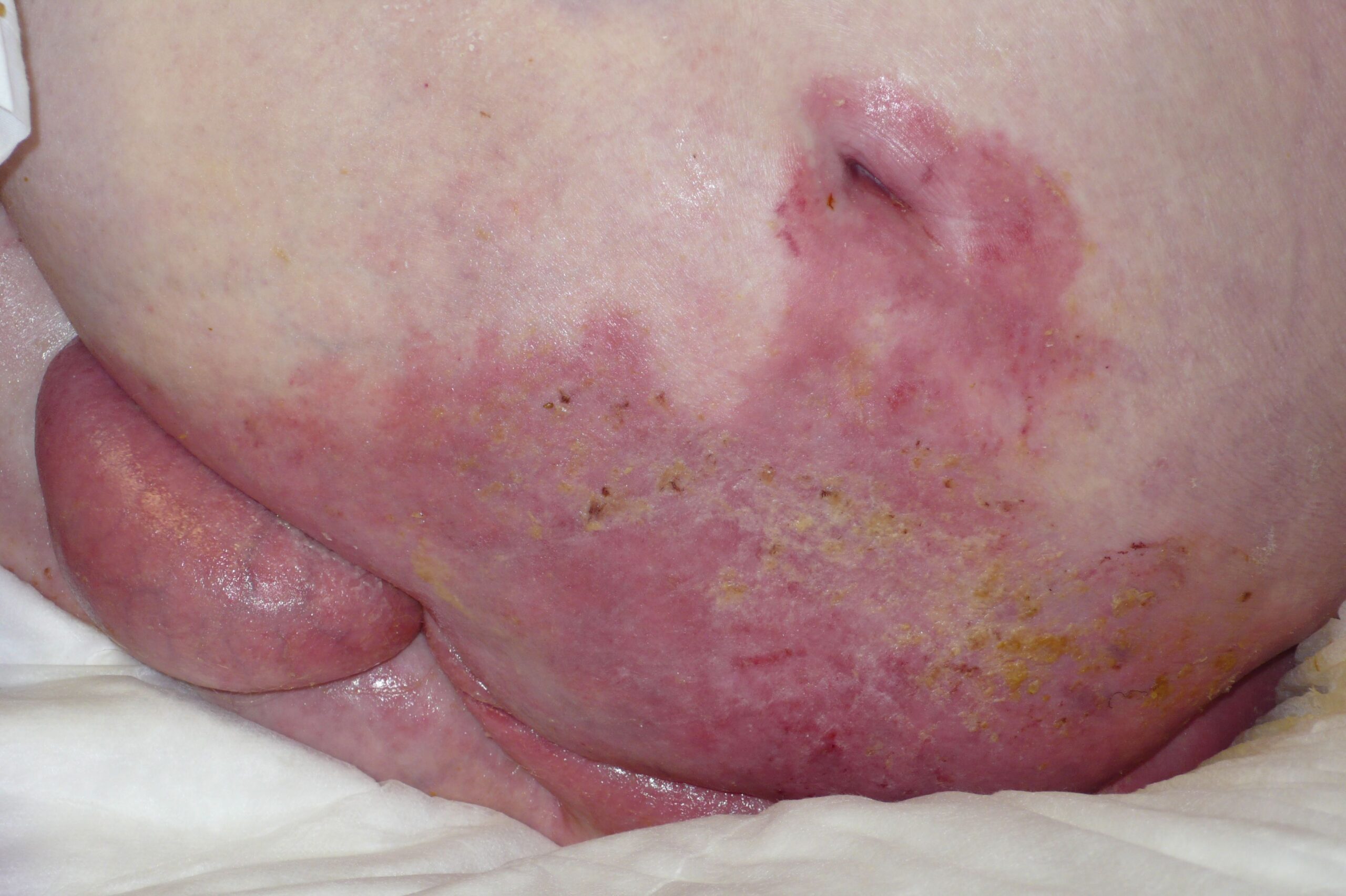Understanding Decubitus Ulcers
Decubitus ulcers, also known as pressure ulcers or bedsores, are injuries that occur when continuous pressure on the skin restricts blood flow, leading to tissue breakdown. These wounds often develop in individuals who are bedridden, wheelchair-bound, or unable to move freely for extended periods. The most common locations include the heels, hips, lower back, and elbows—areas where bone is close to the skin. Prolonged immobility creates sustained pressure that damages skin and underlying tissues. Beyond being painful, these ulcers can lead to severe infections if not treated promptly. They can also affect emotional well-being, creating frustration, discomfort, and loss of independence. Understanding how and why they form is the first step toward effective decubitus ulcer treatment.
Identifying the Stages of Decubitus Ulcers
Treatment begins with recognizing the stage of the ulcer. Stage 1 ulcers present as red, irritated skin that does not improve after relieving pressure. At Stage 2, the skin breaks open, forming shallow wounds or blisters. Stage 3 involves deeper skin loss, with visible damage to underlying tissue, sometimes accompanied by foul odor or drainage. By Stage 4, the ulcer is severe, with tissue loss extending to muscle, tendon, or even bone, posing a high risk of infection. Healthcare providers rely on accurate staging to guide treatment options and select appropriate dressings. Recognizing the early signs allows intervention before the ulcer progresses into deeper, more dangerous wounds. Each stage requires careful assessment, as misclassification can delay healing and worsen the condition.
Medical Assessment and Diagnosis
Proper diagnosis of decubitus ulcers is essential for tailoring a treatment plan. Healthcare professionals conduct physical examinations, review medical history, and evaluate risk factors such as immobility, nutrition, or chronic illness. They also measure the ulcer’s size, depth, color, and drainage to determine healing progress over time. Sometimes, cultures are taken from the wound to identify bacterial infections that may complicate recovery. Diagnostic imaging, such as MRI or bone scans, may be necessary in advanced cases to evaluate infection spread to deeper tissues. Documentation is equally important, as it allows consistent monitoring and early detection of complications. By combining physical assessment with diagnostic tools, healthcare teams can ensure the most effective decubitus ulcer treatment strategies.
Core Principles of Decubitus Ulcer Treatment
Effective treatment relies on several foundational practices. The most critical is relieving pressure on the affected area, which can be achieved through repositioning and specialized cushions. Wound cleaning must be performed regularly, with dressings applied to protect against infection and maintain moisture balance. Pain management is also essential, ensuring the patient is comfortable enough to follow the care plan. Nutrition plays a vital role—adequate protein, vitamins, and hydration support the body’s natural healing process. Caregivers are often trained to perform daily inspections, recognizing changes before they worsen. Emotional support should not be overlooked, as ulcers often reduce mobility and independence. These core principles work together to promote steady healing and prevent further deterioration.
Advanced Treatment Options
In cases where basic methods are not enough, advanced therapies are often used. Negative pressure wound therapy (NPWT), which uses suction to remove fluids and promote tissue growth, can accelerate healing. Hyperbaric oxygen therapy increases oxygen supply to tissues, supporting recovery in difficult-to-heal ulcers. Specialized dressings, such as hydrocolloid, alginate, foam, or silver-based options, offer targeted protection and antimicrobial benefits. In some cases, surgical interventions like skin grafts or flap surgery are necessary to close large wounds and restore skin integrity. Antibiotics may be prescribed when infection is confirmed, though they are not routinely used unless needed. Physical therapy may also be introduced to improve mobility and circulation. These advanced treatments provide hope for patients with complex or severe ulcers, reducing pain and preventing long-term complications.
Preventive Measures to Avoid Recurrence
Preventing decubitus ulcers is as important as treating them. Caregivers and patients can take proactive steps to reduce the likelihood of recurrence. Essential practices include:
- Repositioning every two hours for bedridden individuals
- Using pressure-relieving mattresses and wheelchair cushions
- Maintaining clean and dry skin to prevent breakdown
- Inspecting high-risk areas daily for early signs of redness
- Ensuring proper hydration and balanced nutrition
- Educating caregivers on repositioning and wound care techniques
- Encouraging gentle physical activity when possible
These measures reduce risks while fostering comfort and independence. By integrating prevention into daily routines, patients and caregivers can significantly reduce the chance of recurring ulcers, improving long-term quality of life.
Role of Multidisciplinary Care
Decubitus ulcer treatment is most effective when a team of professionals works together. Physicians assess and guide medical management, while nurses provide daily wound care and monitoring. Dietitians contribute by creating nutrition plans that enhance healing, particularly with protein and micronutrients. Physical therapists help maintain mobility and circulation, reducing pressure buildup. Psychologists or counselors may support the patient’s emotional well-being, particularly when ulcers cause anxiety or depression. Family caregivers also play a crucial role, bridging the gap between hospital care and home management. This collaborative approach ensures that every aspect of patient health is considered, addressing both physical and emotional needs.
Psychological and Emotional Impact
Living with decubitus ulcers extends beyond physical pain. Patients often experience feelings of isolation, frustration, and reduced self-worth due to limited mobility. Discomfort and dependence on others can affect confidence and emotional health. Caregivers may also face stress and exhaustion, especially when providing long-term assistance. Addressing the psychological side is vital for overall recovery. Counseling, peer support groups, and open communication between caregivers and patients can help ease emotional strain. Encouraging small milestones in healing can boost morale and motivate adherence to treatment plans. Quality of life improves when emotional health is prioritized alongside medical care, making recovery more holistic and compassionate.
FAQs About Decubitus Ulcer Treatment
How long does it take for a decubitus ulcer to heal?
Healing time varies depending on severity, ranging from a few weeks for Stage 1 ulcers to several months for advanced ulcers.
Can decubitus ulcers heal completely?
Yes, with timely treatment and consistent care, many ulcers heal fully, although severe cases may require surgical interventions.
What type of dressing is best for pressure ulcers?
The choice depends on the stage of the ulcer. Options include foam dressings, hydrocolloid dressings, alginate dressings, and silver-based dressings for infection control.
How often should patients be repositioned?
Most guidelines recommend repositioning every two hours for bedridden patients to reduce prolonged pressure.
Are there home remedies that can safely support healing?
Some supportive measures, such as keeping the skin clean and maintaining good nutrition, can be done at home. However, advanced ulcers require professional treatment.
Takeaway
Decubitus ulcers are preventable and treatable with the right strategies. Proper staging, wound care, nutrition, and pressure relief form the foundation of treatment. Advanced options like NPWT, specialized dressings, and surgical care provide hope for complex cases. Prevention is equally important, ensuring ulcers do not recur once healed. By combining medical expertise, caregiver support, and patient resilience, recovery becomes a shared journey that restores comfort, dignity, and quality of life.




